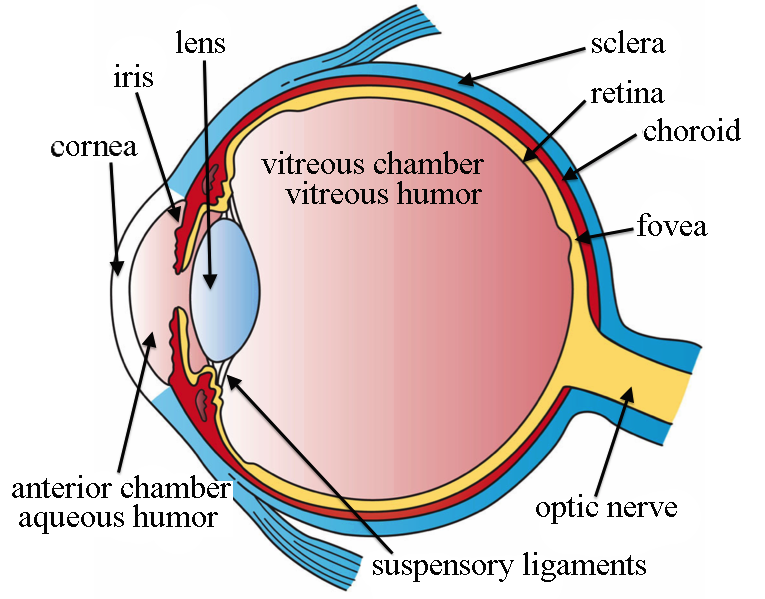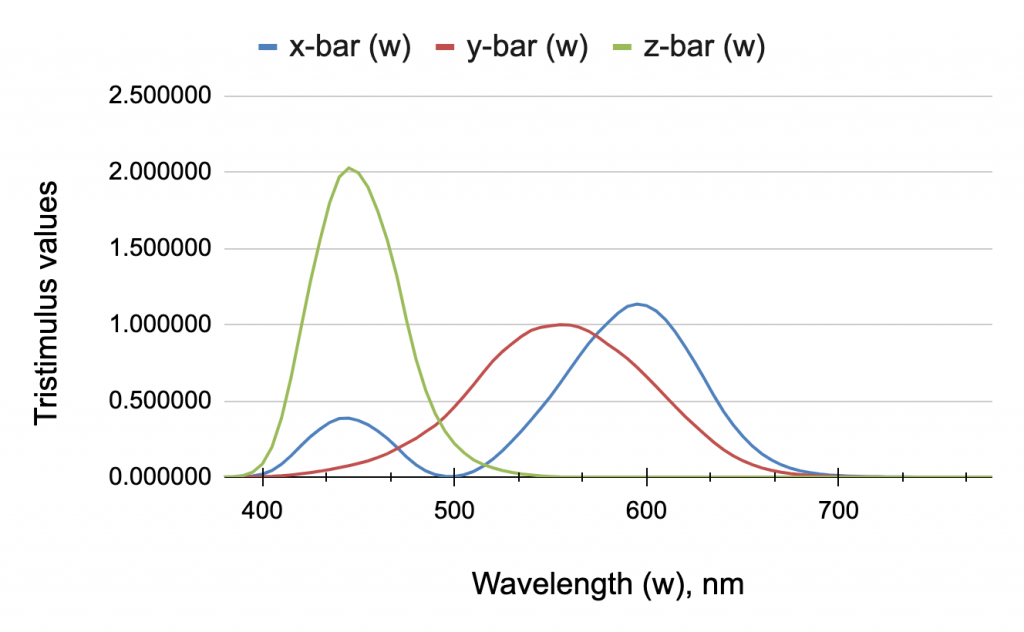People are increasingly worried about lidar eye safety.
Demand for lidar technology is increasing to satisfy applications like self-driving cars and aerial surveying.
Twenty years from now we will have several lidar-enabled devices in our immediate environment.
This has raised a new concern for many people: is lidar dangerous for your eyes?
Lidar-enabled devices use lasers to scan their environment and in so doing build an accurate image of their surroundings.
You can find some more information on how lidars work by checking out our feature article on lidars.
Lasers are coherent and collimated light sources that can be focused to a really small spot size with a high energy density.
Sufficiently powerful lasers can have severe adverse effects when focused on a small spot size on the human body.
As you can probably guess, our eyes are a lot more sensitive to powerful radiation than the skin.
Without much further ado, here’s the short answer to the question – Is LiDAR dangerous for your eyes?
Most LiDARs use laser sources emitting infrared light with a wavelength of 905 nm or 1550 nm. Our eyes are only sensitive to visible wavelengths.
However, invisible near-infrared light (up to 1400 nm) can penetrate our eyes and fall on the retina.
This means near-infrared laser radiation can harm our eyes.
Luckily though, lidar systems use class 1 eye-safe lasers which are safe for use in all normal use conditions. Conclusion – lidar does not pose any threat to our eyes.
Having looked at the short and sweet answer, let’s take a dive into the long answer just in case you need some more convincing.
In order to quantify the threat posed by LiDAR to our eyes, you need to understand how laser light interacts with your eyes.
To achieve this, you need to answer questions like; how far do different wavelengths penetrate our eyes? How sensitive are our eyes to given wavelengths?
Following this, you need to consider the safety classification of laser sources. Armed with this knowledge, you can then conclude whether lidar is dangerous for your eyes or not.
The human eye
The eyes are one of the most important parts of our bodies. They are sensitive to visible light and offer us the gift of vision.
Lasers can have harmful effects when focused on any part of the body. However, our eyes are particularly vulnerable to laser radiation with inappropriate power levels.

Our eyes form images by refracting light that hits the cornea onto the lens. The amount of light reaching the lens is controlled by the opening of the iris.
The lens then focuses the light on the retina to form an inverted image.
The light-sensitive cells (rods and cones) in the retina convert the light falling on them into electrical signals which are sent to the brain through the optical nerve.
The brain then performs its magic and ‘cooks’ up an image from these signals.
The rods have high photosensitivity and are useful for conditions with low light intensity e.g. night vision.
On the other hand, the cones are less photo-sensitive. Rather, they have a much better capacity for color perception and spatial resolution (as compared to the rods).
Cones are indispensable for conditions where we have lots of light.
Sensitivity of the human eye
In our quest to determine whether lidars are harmful to our eyes or not, we need to understand their sensitivity.
The electromagnetic (EM) spectrum is quite wide covering a range of wavelengths. Our eyes are only sensitive to the visible part of the EM spectrum.
This corresponds roughly to light with a wavelength lying approximately between 400 nm and 700 nm.
The cones in our eyes enable us to perceive the different wavelengths of light as colors. Our color perception ability is physical/biological as well as psychological.
There are three different types of cones. Each group of cones has optimized sensitivity for short-wavelength (blue), medium-wavelength (green), and long-wavelength (red) light.
Our eyes are only sensitive to these three base colors i.e. we are trichromatic.
The brain perceives all other colors by interpolating the relative signal strength received from the cones sensitive to red, green, and blue light.
On a physical level, two colors are the same if they correspond to the same wavelength.
When it comes to your eyes, two colors are the same if they have the same tristimulus response i.e. if the cones in your eyes give the same red, green and blue response.
In 1931 the International Commission on Illumination (CIE) standardized eye sensitivity and color perception by measuring the standard observer color matching functions as shown in the figure below.
These color matching functions are very important as they give an accurate indication of the eye’s sensitivity.

Penetration of light into our eyes
Now that we have a clear idea about eye sensitivity, we move on to understanding how light enters the eye.
The depth to which light penetrates our eyes depends on its wavelength. According to the Association of University Radiation Protection Officers, light with wavelengths surrounding the visible part of the EM spectrum penetrates our eyes as follows;
- 180 nm – 315 nm (UV C & UV B) and 3000 nm – 1 mm (IR C): can penetrate no further than the cornea.
- 315 nm – 400 nm (UV A) and 1400 nm – 3000 nm (IR B): can go past the cornea and the aqueous humor but not further than the lens.
- 400 nm – 1400 nm (visible and near-infrared/IR A): can penetrate the cornea, aqueous humor, and lens, all the way to the retina.
This is some interesting information right there. In addition to visible light, near-infrared light (up to 1400 nm) can penetrate your eye all the way to the retina. Under certain conditions, this could pose a serious hazard to our eyes.
If a strong beam of visible light strikes our eyes, we will instinctively close our eyelids and look away.
On the other hand, if near-infrared light falls on your retina, you would not really notice it at first since your eyes aren’t sensitive in that wavelength range.
Unfortunately, with sufficient time or intensity, Infrared light can cause thermal damage to the retina.
In order to be safe, you should prevent near-infrared light from hitting your retina as you can’t really defend yourself against it.
Laser safety classification
Now that we have a good idea of your eye’s sensitivity, we turn our attention to the characteristics of the laser radiation emitted by LiDARs.
Since you are still here because you want to know if LiDAR is dangerous for your eyes. Let’s get on to the topic of laser safety.
There is a myriad of lasers used for various applications including LiDAR. Laser safety considerations mean it is desirable to get some easy-to-follow guidance on the threat posed by various types of lasers.
This type of guidance is usually codified in laser safety standards. For example, the IEC 60825 laser safety standard is commonly used.
According to the IEC 60825 standard lasers can be classified according to their maximum permissible exposure (MPE).
The MPE is the maximum amount of laser energy per unit area that is permissible at a given wavelength and for a given duration without causing biological damage.
For exposures lasting less than 10s, the MPE is expressed as radiant exposure (J/cm2). On the other hand for exposures lasting more than 10s, the MPE is expressed as irradiance (W/cm2).
Lasers are classified in the following classes; class 1, class 1M, class 2, class 2M, class 3M, class 3R, and class 4.
This classification indicates increasing potential for causing biological damage. Laser class 1 is the lowest level while class 4 represents lasers with the highest potential for damage.
A class 1 laser is eye-safe at all times i.e. it is safe for human eyes under normal conditions of use. A class 1 laser can never exceed the MPE.
Are lidar systems dangerous for your eyes?
So far we have looked at the sensitivity of the eye, and how far light can penetrate into the eye. We also brushed up on the basics of laser safety classification.
Now in order to confirm whether lidars pose a threat to our eyes, we need to look at the laser sources used in them. The concept of MPE which we introduced earlier can finally be put to practical use.
Current commercial lidar systems typically use infrared laser diode sources emitting around 905 nm or 1550 nm. As we saw earlier, these wavelengths are in the near-infrared (IR A) and IR B parts of the EM spectrum.
Being in the near-infrared part of the EM spectrum, 905 nm lidars represent a higher eye safety hazard. We know this because we learned earlier that light with this wavelength can penetrate our eyes all the way to the retina. There is potential for real damage here.
In order to guard against this, the overwhelming majority of lidars use class 1 eye-safe laser diode sources. The light emitted by these lasers can’t exceed the MPE for your eyes. So they do not pose any danger to your eyes.
Lidars using 1550 nm laser diode sources present less potential for damage (compared to 905 nm laser diode sources) to our eyes. Light with this wavelength can’t penetrate your eyes any further than the lens.
1550 nm light has a higher MPE than a 905 nm light. Lidar systems using 1550 nm laser sources can use more power. A practical benefit of this is that 1550 nm lidar has a better range than 905 nm lidar.
In order to better understand the disparity in MPE ratings between 950 nm and 1550 nm, let’s consider a practical example. Take for example a 905 nm laser with a pulse width of 100 nanoseconds and a pulse repetition frequency of 1 kilohertz.
This 905 nm laser has an MPE (expressed in terms of irradiance) of 1.3 x 10-4 W/cm2. On the other hand, a continuous wave 3 mW 1550 nm laser with a beam diameter of 1.1 cm has an MPE of 0.1 W/cm2 (for an exposure of 10 seconds).
These two lasers are not exactly comparable. However, you can note that in this example, the MPE of the 1550 nm laser is roughly 700x higher than that of the 905 nm laser. Even if we are off in our comparison by a factor of 100, the 1550 nm laser would still have a higher MPE.

Going even further, consider the plot above which shows the MPE for 905 nm and 1550 nm signals for various pulse durations as per the IEC 60825 standard. Note that the MPE for 1550 nm is always higher than for 905 nm.
If a lidar system ever uses a laser with a higher safety class, then it could pose a severe hazard to your eyes. However, as it stands, according to current information and practices, lidar manufacturers use class 1 eye-safe (near) infrared laser diodes.
So far this report has focused on determining whether lidars are dangerous for human eyes. It is interesting also to consider if lidar is dangerous for the eyes of animals.
Scientific studies on the spectral sensitivities of terrestrial animals indicate that the eyes of honey bees, house flies, and pigeons have sensitivities close to ours.
If you think about it for an instant, this makes sense. These animals have adapted to operate in the natural world just like us.
So their eyes should have a similar performance to ours. Consequently, we can conclude that laser light from lidar devices is not dangerous for animal eyes.
As you have probably guessed by now, things will definitely be different for nocturnal animals.
These animals can sense their environment using heat signatures which are essentially emissions in the infrared part of the spectrum.
Lidar may pose a real threat to them. This is something that needs to be investigated further as time goes on to make sure there are no adverse effects on natural ecosystems.
If you read this far, I hope I have provided you with enough information to convince you that lidar will not harm your eyes.
Lidar technology is integrated into several different types of devices. For example, see the table below;
| Lidar range finder sensor | Lidar depth camera | Lidar laser range scanner |
 |  |  |
| Smartfly lidar range finder module | Intel RealSense depth camera | Smartfly 2D lidar range scanner |
There is no need to fear using lidar-enabled devices would lead to eye injuries. As you found out in this report, lidars use lasers emitting at wavelengths that can’t penetrate your eyes.
Additionally, as a safety precaution, lidars only use class 1 eye-safe laser diodes. Class 1 eye-safe laser diodes can never exceed the maximum permissible exposure for your eyes.
